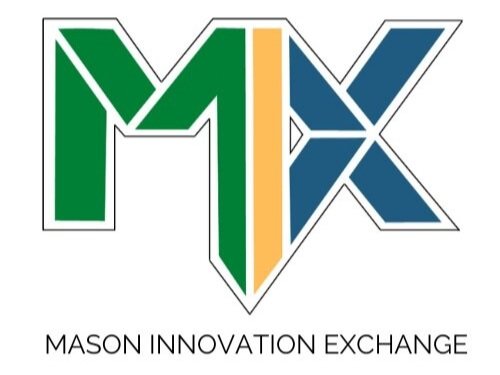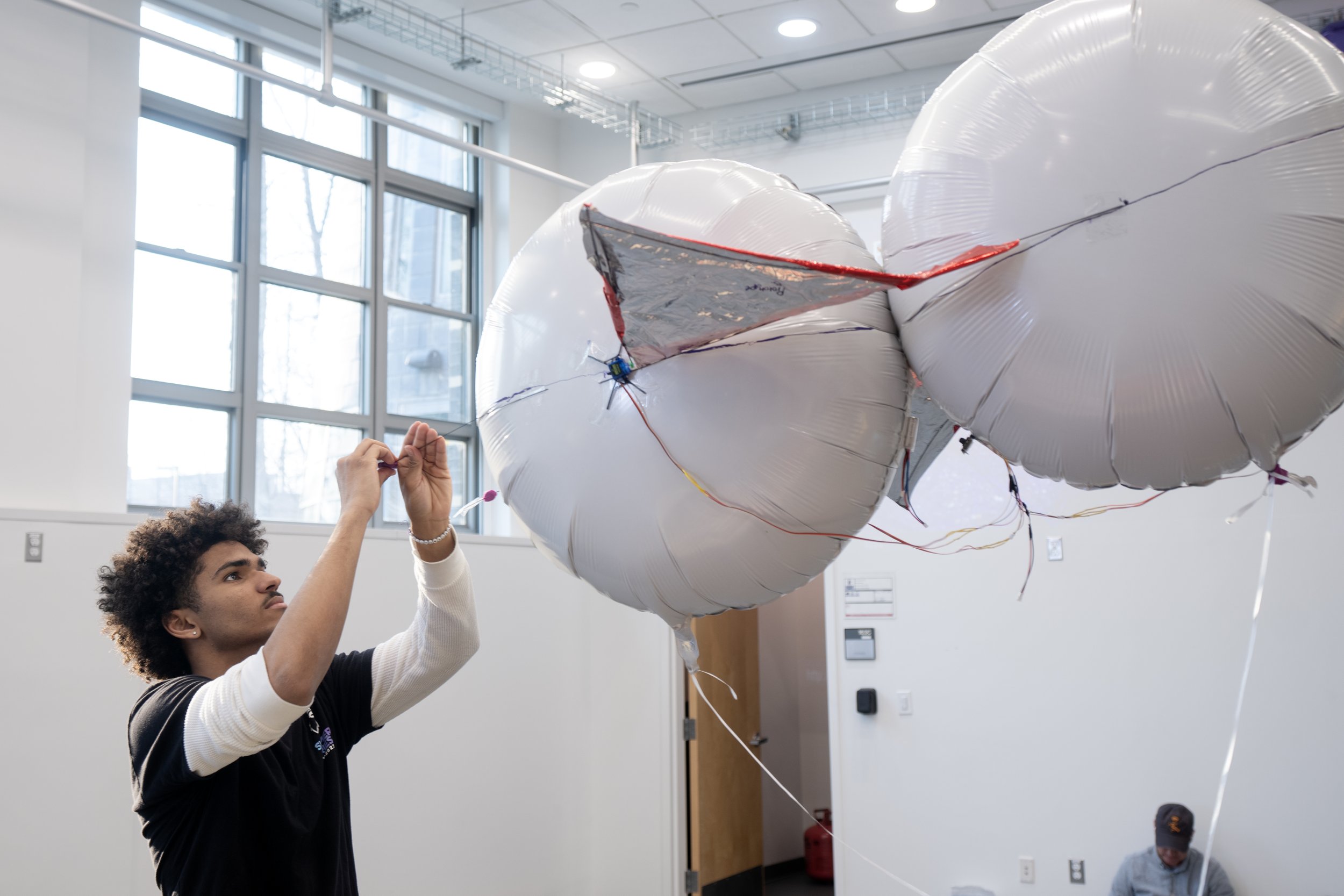More UAV: A Biologically-inspired, Lighter-than-air, Instructional, Mechatronics Program (BLIMP)
The MIX, in conjunction with Assistant professor, Daigo Shishika, PhD of Mason’s Mechanical Engineering Department, developed a new program in Spring for Mason students to learn introductory concepts related to unmanned aerial vehicles (UAV) or an autonomous aerial vehicle and advanced manufacturing through hands-on experience building flapping-wing lighter-than-air vehicles (blimp).
Lighter-than-air vehicles or blimps are gaining attention as evolving platform in robotics with several beneficial properties such as energy efficiency, collision resistance, and ability to work in close proximity to human users. Through a hands-on experience building a bio-inspired flapping-wing blimp, this seven week class introduces students to the world of robotics and autonomy. The students learn basic concepts in mechanical systems, microcontrollers, computer vision, aircraft dynamics, and their integration to build an autonomous blimp. The course will conclude with design competition with judges for the best design.
This workshop series will cover skills from different disciplines including electrical engineering, and computer science, but with a particular focus on mechanical engineering. Each team of three (3) students will design and build their own flapping wing blimp from scratch. The course will be offered to a total of 18 students (3 students x 6 teams).
At the system level, the students will learn vehicle dynamics, modeling, mechanism design, and basic control theory. More specifically, students will explore how the body shape will affect the aerodynamic characteristics and the stability of the vehicles. The students will also be exposed to a bio-inspired approach in designing wing shapes and flapping mechanisms. The design of the flapping wing mechanism will also involve the exploration of additive manufacturing concepts, including material selection, computer aided design (CAD), 3D printing, and post-processing.
Material selection involves choosing the most suitable materials based on their properties, performance, and compatibility with the intended use, considering factors like mechanical strength, strength-weight ratio and cost-effectiveness.
Through CAD design, students gain the ability to create and modify detailed 2D and 3D models of components, which will subsequently be converted into STL files for 3D printing. 3D printing utilizes STL files and compatible printers (e.g.,Fused Filament Fabrication (FFF) or Selective Laser Sintering (SLS)) to construct 3D objects layer by layer. Post-processing includes additional steps after 3D printing, focusing on surface finishing and assembly. Incorporating these additive manufacturing concepts into the development of the flapping wing mechanism allows for innovative solutions, streamlined processes, and better performance of the final products.
“I truly had a lot of fun every week working with my team!”
Spring 2025 8- WEEK COURSE OUTLINE: Tentative
February 5 - Week 1: Kickoff, introduction to autonomous blimps and Microcontrollers (2 hours)
February 12 - Week 2: Introduction to Gears and Linkages, Computer aided design (CAD), and flapping wings (2 hours)
February 19 - Week 3: Intro to proportional–integral–derivative controllers (PIDs), feedback control, image processing, and behavior design with state machine (2 hours)
February 26 - Week 4: Build the body and attach components, center of gravity, center of buoyancy, yaw control and pitch control (2 hours)
March 5 - Week 5: Integration: Combine sensing and actuation systems, Tune the controller (2 hours)
March 19 - Week 6: Initial Flight tests, test vehicle stability and test autonomy (2 hours)
March 26 - Week 7: Final preparations and initial Flight tests, test vehicle stability and test autonomy (2 hours)
April 2 – Week 8: Optional Extra Technical Office Hours with James and Kentaro at MARC Lab
April 9 – Week 8: Final Technical Presentations to judges (2 hours)
Plus required attendance to the MIX 3D Printing Workshop + Soldering and Electronics Training
Applications must be submitted by Sunday, February 2 at midnight. Tentative: Workshops begin on Wednesday, February 12. Classes will be held each Wednesday from 4:30-6:30PM, and run for 8 weeks. Notice of acceptance will be sent by the end of day, February 7. The course will be offered to a total of 18 students.






